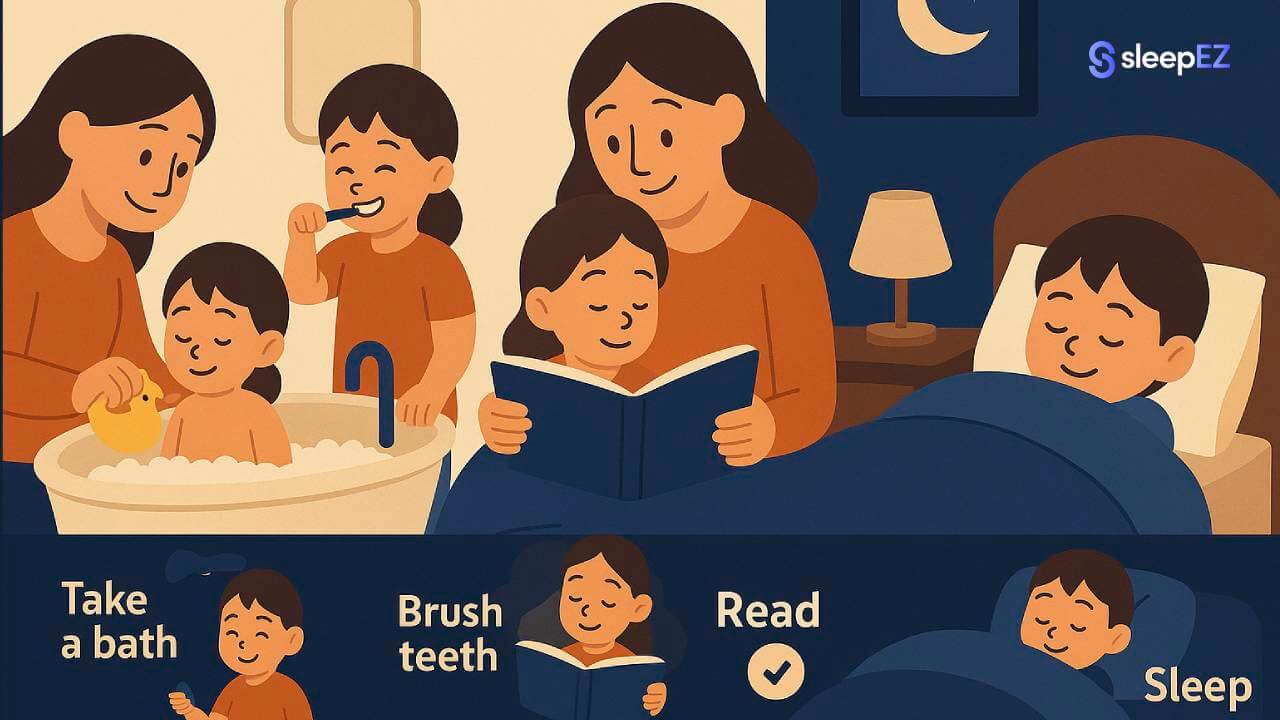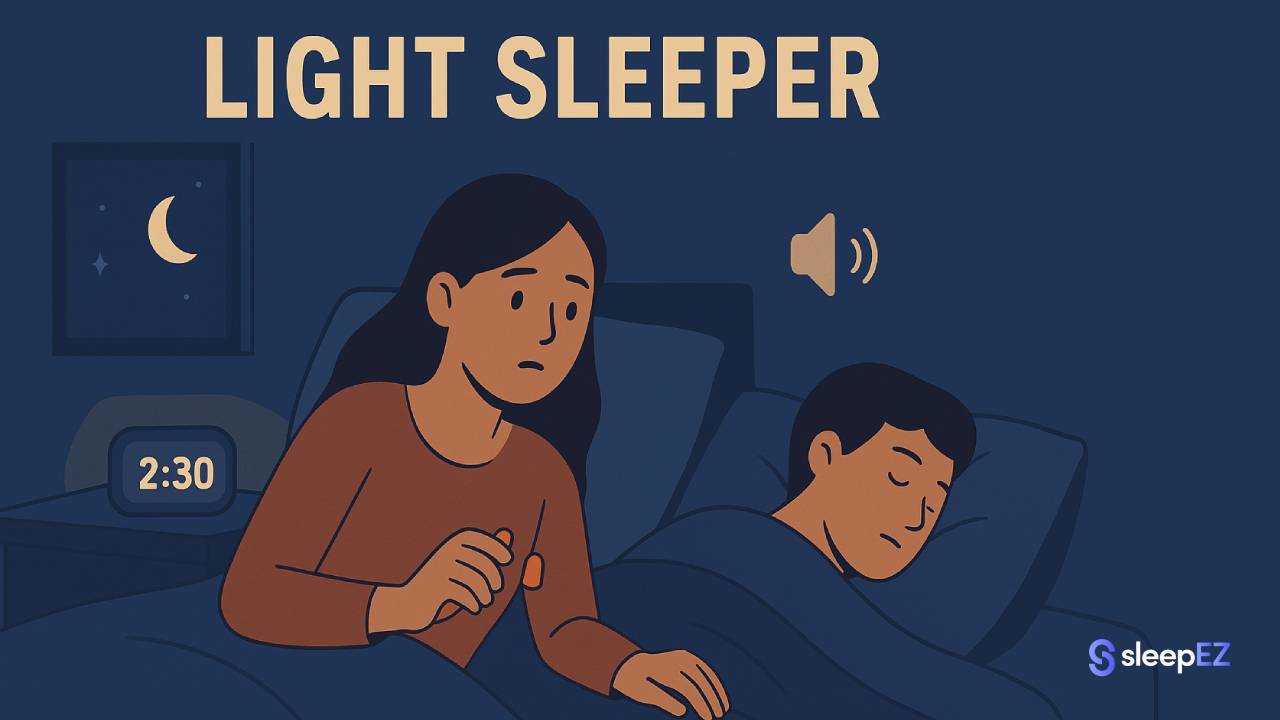Bedtime doesn't have to be a battle. If you're tired of the negotiations, the tears, and the endless "just one more" requests, you're not alone.
Most parents struggle with bedtime at some point. The good news? A simple bedtime routine for children can transform those chaotic nights into calm, predictable wind-downs.
This guide gives you a practical, step-by-step plan based on advice from pediatric experts. No complicated theories. Just what works.
Why Is a Bedtime Routine So Important for Kids?
Before we get to the "how," let's talk about the "why." Understanding the benefits makes it easier to stay consistent when your child tests the boundaries (and they will).
It Signals Sleep
A routine acts like a sleep signal for your child's brain. When you do the same activities in the same order every night, their body learns to expect sleep. The wind-down becomes automatic.
It Provides Security
Kids thrive on predictability. Knowing exactly what comes next makes them feel safe. There's comfort in the familiar pattern: bath, book, bed. No surprises, no anxiety about the unknown.
It's Special Bonding Time
This is your chance for quiet connection without the distractions of the day. No phones, no TV, no rushing. Just you and your child, together.
It Promotes Better Sleep
This isn't just theory. Research from the American Academy of Pediatrics shows that kids with consistent bedtime routines fall asleep faster and wake up less during the night. Better sleep means better behavior, better learning, and better health.
The 4 Core Steps of a Perfect Bedtime Routine
Keep it simple. Four steps, same order, every night.
Step 1: The Wind-Down (30 minutes before bed)
This is your transition from "play time" to "quiet time."
What to do:
- Put away toys together
- Dim the lights in your home
- Turn off all screens: TV, tablets, phones, everything
The screen rule is critical. The AAP recommends no screen time for at least one hour before bed. The blue light from screens tricks your child's brain into thinking it's still daytime, making it harder to fall asleep.
Step 2: The Wash-Up (15 minutes before bed)
This is about hygiene and physical comfort.
What to do:
- Give them a warm bath (the drop in body temperature after a warm bath actually helps promote sleep)
- Brush teeth
- Put on pajamas
Keep it simple and quick. This isn't playtime in the tub. Save the toy boats for morning baths.
Step 3: The Quiet Connection (10 minutes before bed)
This is your final bonding moment of the day.
What to do:
- Read one or two favorite books
- Sing a quiet song or lullaby
- Talk softly about their day
Keep your voice low and calm. This isn't the time for exciting stories or tickle fights. You're helping their body settle.
Step 4: The Goodnight (Final 2 minutes)
This is the final, firm "lights out."
What to do:
- Give a final hug and kiss
- Say a simple "I love you, goodnight"
- Tuck them in
- Turn on their sound machine (more on this below)
- Leave the room
That's it. The routine is over. Bedtime has arrived.
7 Tips for Bedtime Routine Success
The routine itself is simple. Making it work takes strategy.
1. Be 100% Consistent
This is the number one rule. Do the same steps in the same order at the same time every single night. Yes, even on weekends. Even when you're tired. Even when you have guests.
Consistency is what makes the routine work. Your child's brain needs the repetition to learn the pattern.
2. Start Early
Begin the routine 30 to 60 minutes before you want your child actually asleep. If bedtime is 8:00 PM, start the wind-down at 7:30 PM.
3. Offer Simple Choices
Avoid power struggles by giving limited options. Let them choose between two pairs of pajamas. Let them pick which book to read first. This gives them a sense of control without derailing the routine.
Don't ask open-ended questions like "What do you want to do now?" Stick to "Do you want the red pajamas or the blue ones?"
4. Use a Visual Chart
For toddlers and preschoolers, a visual chart works wonders. Create a simple poster with pictures of each step: bath, teeth, book, bed. They can point to where they are in the routine. It makes the abstract concrete.
5. Stay Calm and Firm
Your child will test boundaries. They'll ask for more water, another book, one more hug. Stay loving but firm. "I love you, but bedtime is over. I'll see you in the morning."
Don't negotiate. Don't get angry. Just calmly redirect them back to bed.
6. No Screens Before Bed
Worth repeating: no tablets, no TV, no phones for at least an hour before bed. The AAP guidelines exist for a reason. Blue light suppresses melatonin, the hormone that makes us sleepy.
7. Create a Sleep Sanctuary
Make their bedroom perfect for sleep:
- Keep it cool (around 68-72°F is ideal)
- Make it dark (blackout curtains help)
- Keep it quiet (or use white noise, see below)
A Note on "Quiet": How to Create the Best Sound Environment
Here's something most parents don't realize: a perfectly silent house can actually make bedtime harder.
When a room is too quiet, every small noise becomes a distraction. The dishes clinking in the kitchen. The TV in the next room. A car driving by. These sudden sounds can pull your child's attention and make it harder to drift off.
This is why many sleep experts recommend a white noise machine. It creates a constant, soothing blanket of sound that masks those sudden noises. The brain learns to tune it out, but it still blocks the jarring sounds that would otherwise wake or distract your child.
A device like the Hush light Sound Machine or a basic white noise machine becomes a powerful sleep cue. When your child hears that familiar sound, their brain knows: "This is the sound of sleep." It helps them fall asleep faster and stay asleep even when the house isn't perfectly silent.
The machine becomes part of the routine, just like the bedtime book.
Read: White Noise Machine Baby
Troubleshooting
Real life is messy. Here's how to handle the most common problems.
When Your Child Is Afraid of the Dark
Never dismiss their fear. It's real to them, and that makes it real.
Acknowledge it: "I know the dark feels scary sometimes." Then provide a solution: use a small, dim nightlight with a warm color like red or orange. Avoid bright white or blue lights, which can interfere with sleep.
Reassure them that they're safe and that you're nearby. Sometimes just knowing you're in the next room is enough.
When Your Child Keeps Getting Out of Bed
This is common, and it's frustrating. But there's a proven method: the "Silent Return."
Here's how it works: when your child gets out of bed, calmly and silently (no talking, no eye contact) pick them up or lead them back to their bed. Tuck them in and leave. Don't explain. Don't scold. Don't engage.
You may have to do this 10, 20, or even 30 times the first night. It's exhausting, but it works. The key is consistency. They will learn that getting up gets them nothing: no attention, no negotiation, no reward. Just a quiet trip back to bed.
Most kids give up after a few nights of this approach.
When to Talk to Your Pediatrician
These tips work for most children, but I'm not a doctor. Your pediatrician is your partner in your child's health. Please talk to them if:
- Your child snores loudly, gasps, or pauses in breathing while asleep (this could be sleep apnea)
- Your child seems to have extreme nighttime fears or anxiety that doesn't get better with reassurance
- You've been consistent with a routine for several weeks and nothing is improving
- Your child seems excessively tired during the day despite getting enough hours of sleep
- You have any other concerns about your child's sleep or behavior
Trust your instincts. If something feels wrong, get professional advice.
Conclusion: Patience and Consistency Win the Night
A bedtime routine will not work in one night. It takes time. The first few nights might even be harder before they get easier.
The goal is not perfection. The goal is progress.
Be patient with your child. Be patient with yourself. Stay consistent, and you'll be giving your child a true gift: the lifelong skill of falling asleep peacefully.
Some nights will still be rough. That's normal. That's parenting. But most nights will get easier, calmer, and more connected.
You've got this.




Leave a comment
This site is protected by hCaptcha and the hCaptcha Privacy Policy and Terms of Service apply.